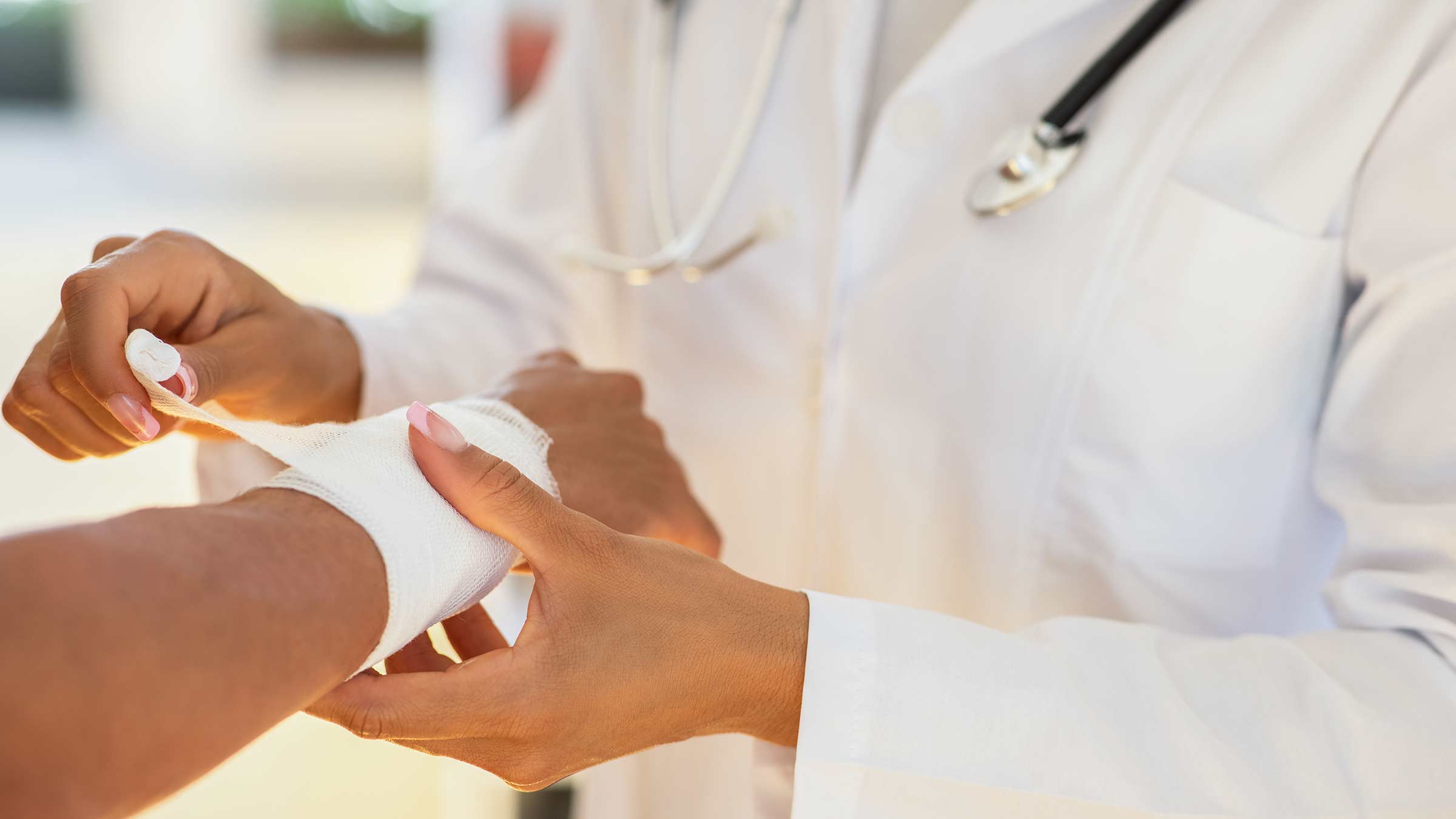
When it comes to healing burns and wounds, making sure the wound is properly bandaged can make the difference between a quicker healing time and prevent infection.
Is it better to keep a wound moist or dry?
Keeping wounds, especially burns, moist and clean accelerates new skin growth and prevents complications.
For more severe cuts, it’s best to keep them covered with an ointment to minimize the risk of infection and aid in the healing process. In general, you should always keep wounds covered until they are healed. This is important for burns or abrasions and for small cuts.
Is it good to let a wound scab over?
Formation of a scab is a dry covering of biologic material that prevents new skin cell growth.
New skin cells can’t grow over the wound if it’s dry or if there is a scab.
Scab formation can sometimes function as nature’s band aid for minor cuts, but it delays the healing of burns. It can also crack and bleed and is not flexible when over a joint.
Scabs prevent new skin cell formation over the burn through a process called epithelialization.
Burns always heal better if covered and kept moist with an antibiotic ointment and non-stick dressing
Best type of bandaging for wound care
The best type of bandaging is not something dry or gauze-like, which could risk sticking to the wound, pulling the skin off and causing pain.
Instead, think of using a layer of antibiotic ointment and a non-stick dressing.
Examples of non-stick dressings are thin gauze coated in petroleum ointment or mineral oil, or a non-stick bismuth tribromophenate yellow dressing.
Wound care based on injury type and location
The nature of the injury and the location on your body are important wound care factors.
For cuts, the depth of the wound and how you were injured determine the level of care needed.
If the wound is shallow and has a low risk of infection, then cleaning the wound, applying ointment and covering it with a bandage should prevent infection and not require any additional antibiotics.
For wounds that are deeper and look like there is fat, bone or tendon exposed, these must be treated by a physician and you should seek evaluation at urgent care or an emergency department. When deeper structures are exposed, the wound might need sutures, or a surgery called a skin graft.
How we determine the severity of a burn
For burns, the nature of the injury and details of how the injury occurred is important to determining the depth of the burn.
The depth of a burn refers to what layers of the skin where damaged, how severe the burn is and if it can heal without surgery. The severity of the burn depends on the temperature of the heat source, length of time of exposure and the area burned on the body.
The hotter the heat source and the longer the exposure time leads to a deeper burn. The type of thermal source can also affect the depth, flame burns tend to be more severe than scald or contact burns.
The severity of a burn depends on how much of the second layer of skin (the dermis) is damaged. Different locations of the body have different thickness of dermis.
The depth of damaged skin by a burn is often referred to as first, second and third degree. Newer names for these categories are superficial burn, partial-thickness burn or full-thickness burn.
If the burn is third- or fourth-degree — also known as full-thickness burns — it’s the most severe and has damage to the deeper structures below the skin, such as tendons, muscle, bone and nerves.
If the burn crosses a joint or is on a cosmetic area such as the face, neck, hands or feet, it’s more important to seek medical care soon after the injury.
The bigger the wound, the longer it takes to heal if it is a full thickness wound that affects all the layers of the skin.
If the burn is a partial thickness or second-degree burn, it should heal within 10 to 14 days. If your wound takes longer than 10 to 14 days to heal, it’s likely a third-degree burn, and you should have it evaluated by a medical professional.
Full-thickness burns need surgery to heal without scarring and prevent the loss of function. Full-thickness, or third-degree burns, can take three weeks to several months to heal, depending on the size and severity of the wound.
Why scarring happens, and how to prevent it
Scarring happens when collagen gets deposited abnormally, usually after deep third-degree burns heal on their own without surgery.
Surgery, like skin grafts, prevent scarring because it replaces damaged skin and dermis.
Keeping wounds clean and bandaged prevents infection and promotes faster healing. Make sure to routinely change the dressing on your wound as needed.

Ohio State’s Comprehensive Burn Center is the only ABA-verified adult burn center in central Ohio
Learn more about our excellent burn treatment and rehabilitation options.
Learn More




